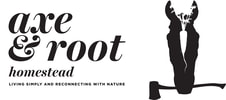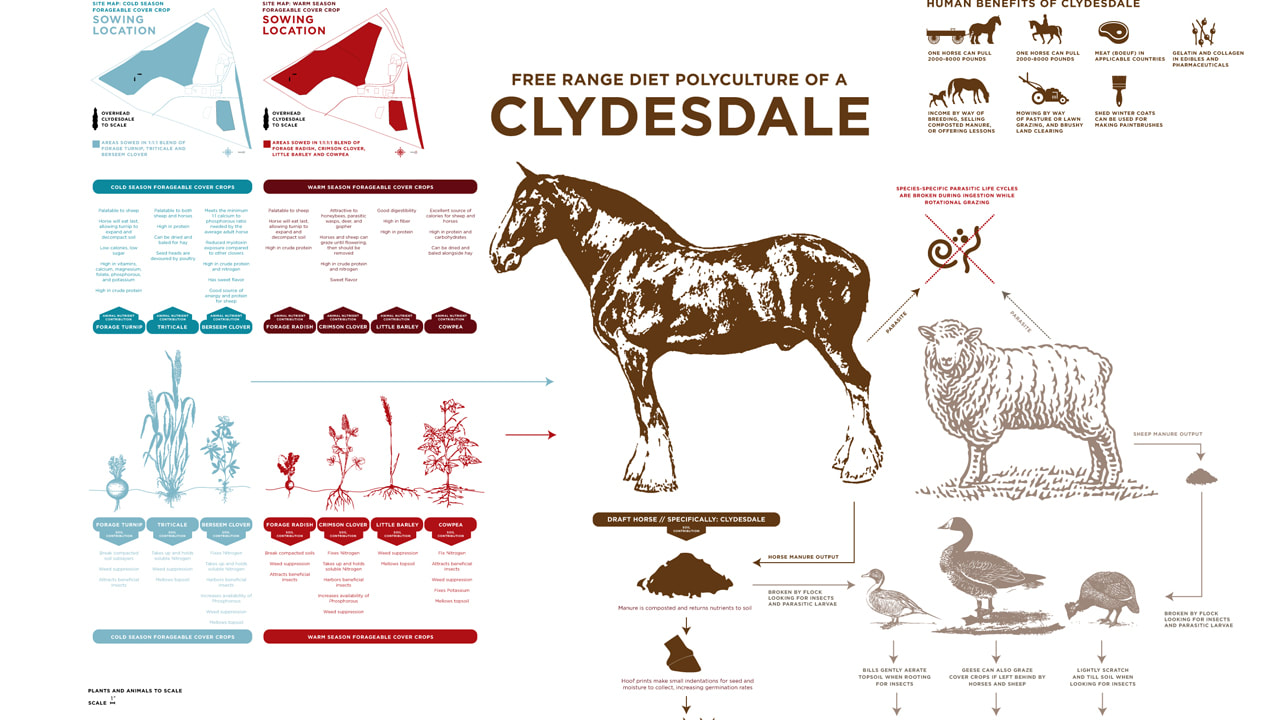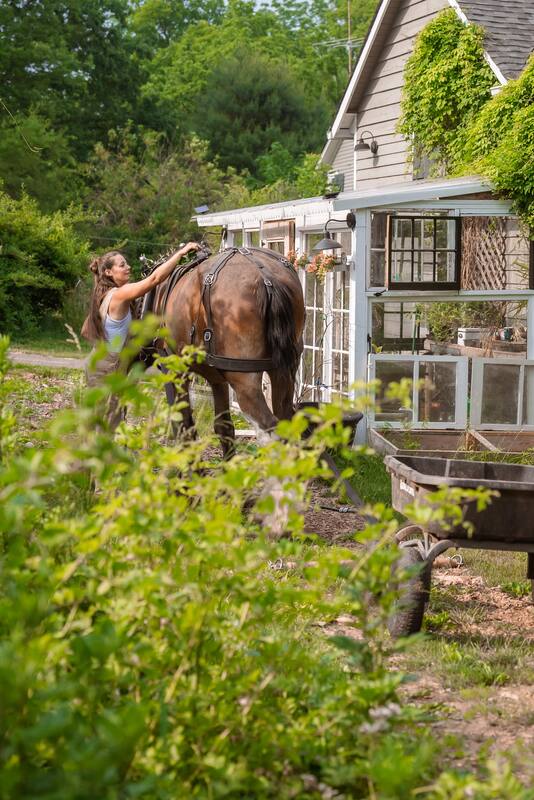|
I’m looking to reduce the amount of hay my horses rely on year-round. By having the ability to grow forageable cover crops in both cool and warm seasons, I would be lessening my reliance on hay and increasing my own Clydesdale food production, while increasing organic matter within the soil, contributing to soil health, and sequestering carbon. This is a polyculture designed for a mature Clydesdale with a moderate work load. The plants chosen here are suitable for the pasture rotation participants at my homestead which includes the two Clydesdales, four Romney sheep, on Shetland sheep, 8 adult geese, 10 guinea fowl, and 35 ducks. The forageable cover crops I have chosen meet the crude protein and calorie requirements of my animals, especially when free choice hay is provided in addition. They also contribute to the soil improvement needs for my specific landscape. These crops are low in sugars and hardy to my growing zone. The forageable plants I have chosen could be a recommendation for a myriad of farms or homesteads with similar animal portfolios and growing climates, however, it is in no way a prescription diet as the needs and health of animals, land terrain, and soil type should all be taken into account. Stock density also must be considered with relation to the amount of land being sown for grazing. Too many animals would be harmful to cover crop growth, and soil improvement would not be seen. Too few animals could lead to an overgrowth of cover crops as seed heads would not be ingested or cut before crops self-spread. For this plan to work properly, horses and livestock would not be allowed to graze on cover crops until a minimum height of 8” is reached for grasses, and 10-12” for legumes. Animals would be removed at 4” forage height to prevent overgrazing and stunt regrowth. Comments are closed.
|
Angela is the farmer and content creator behind Axe & Root Homestead® LLC. This historic six-acre permaculture farm is home to two Clydesdale horses, ten honeybee hives, five sheep, two guardian dogs, barn cats and a flock of 40 geese and ducks. The farm produces maple syrup, fruit from a small orchard and loads of garden produce for consumption, preservation and donation to the local food pantry.
The Sustainable Homestead is available NOW!
Categories
All
|


